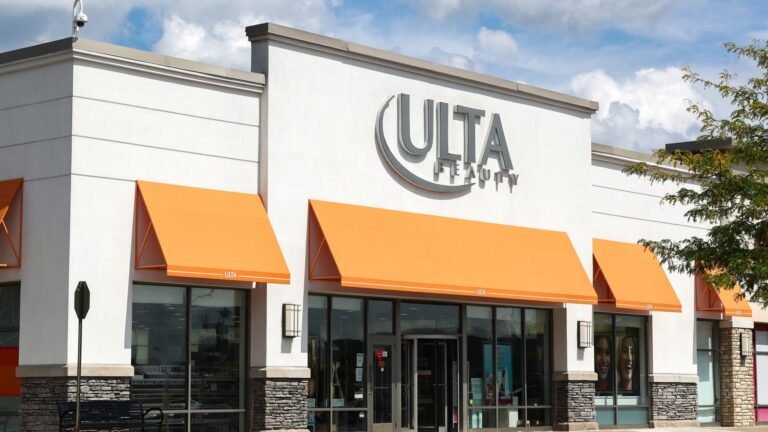Starting or expanding a business requires capital. Whether it’s buying equipment, managing cash flow, hiring employees, or investing in growth, a business loan can provide the funds you need. In the United States, there are multiple types of business loans, each designed for specific purposes. This guide will help you understand business loans, their benefits, plans, application process, and top providers in the USA.
What is a Business Loan?
A business loan is a financial product that provides businesses with funds to cover operational expenses, expansion, or specific projects. Unlike personal loans, business loans are designed for commercial purposes and often have unique terms, interest rates, and repayment schedules.
Business loans can be:
- Secured: Backed by collateral such as property, equipment, or inventory.
- Unsecured: Based on the creditworthiness of the business or owner.
The right loan helps businesses maintain operations, grow, and achieve long-term success.
Benefits of Business Loans
Business loans offer multiple advantages for entrepreneurs and business owners:
1. Access to Capital
Loans provide immediate funds for business operations, expansion, equipment purchases, or marketing campaigns.
2. Cash Flow Management
Helps maintain smooth operations, especially during slow seasons or delayed payments from clients.
3. Business Growth
Funds from loans can be used for expansion, hiring employees, investing in technology, or opening new locations.
4. Builds Credit History
Timely repayment improves the business’s credit score, increasing chances for larger loans in the future.
5. Tax Benefits
Interest paid on business loans is often tax-deductible, reducing taxable income and overall business expenses.
6. Flexible Funding Options
Various loan types cater to different needs, from short-term working capital to long-term expansion funding.
Uses of Business Loans
A business loan can be used for a wide range of purposes:
- Purchasing equipment, machinery, or vehicles
- Expanding business locations or facilities
- Hiring staff or paying salaries
- Marketing and advertising campaigns
- Managing cash flow or operational expenses
- Purchasing inventory or raw materials
- Paying off existing business debts
Types of Business Loans
Businesses in the USA can choose from several types of loans based on their needs:
1. Term Loans
- Fixed lump-sum amount repaid over a predetermined period with interest.
- Ideal for expansion, equipment purchases, or large investments.
2. SBA Loans
- Loans guaranteed by the Small Business Administration (SBA).
- Offer lower interest rates and longer repayment terms.
- Common types: SBA 7(a) Loan, SBA 504 Loan.
3. Business Line of Credit
- Flexible funding up to a pre-approved limit.
- Borrow only what you need and pay interest on the used amount.
- Perfect for short-term expenses or cash flow management.
4. Equipment Financing
- Used to purchase business equipment or machinery.
- Equipment often serves as collateral.
5. Invoice Financing
- Borrow against outstanding invoices to improve cash flow.
- Useful for businesses with delayed client payments.
6. Merchant Cash Advance
- Provides a lump sum based on future sales or credit card revenue.
- Fast funding but higher interest rates.
7. Microloans
- Small loans for startups or small businesses.
- Typically offered by nonprofit lenders or community development organizations.
Business Loan Plans
Business loans come in different plans to suit repayment ability and purpose:
- Short-term Loans: Repaid within 1 year. Useful for working capital.
- Medium-term Loans: 1–5 years. Ideal for equipment or expansion.
- Long-term Loans: 5–25 years. Suitable for major investments like property or acquisitions.
- Revolving Credit Plans: Flexible borrowing and repayment, similar to a business credit card.
Application Process for Business Loans
Applying for a business loan involves multiple steps:
Step 1: Assess Your Needs
- Determine the loan amount, purpose, and repayment capacity.
Step 2: Explore Loan Options
- Compare banks, credit unions, online lenders, and SBA programs.
Step 3: Prepare Documentation
Common documents required:
- Business plan
- Financial statements (income, balance sheet, cash flow)
- Tax returns (personal and business)
- Legal documents (licenses, incorporation papers)
- Credit reports (personal and business)
Step 4: Submit Application
- Apply online or in person, providing all required documents.
Step 5: Underwriting and Approval
- Lenders assess creditworthiness, business performance, and collateral.
- Terms, interest rate, and repayment schedule are finalized.
Step 6: Receive Funds and Begin Repayment
- Funds are transferred to your business account.
- Repayment begins according to the agreed terms.
Step 7: Review and Adjust Annually
- Update your loan terms or coverage based on business growth or changes.
Top Business Loan Providers in the USA
Several reputable lenders provide business loans in the U.S.:
- Bank of America: Term loans, lines of credit, SBA loans.
- Wells Fargo: Flexible options for small and medium businesses.
- Chase Bank: SBA loans, business credit lines, and equipment financing.
- OnDeck: Online lender offering fast term loans and lines of credit.
- Kabbage: Quick approval, revolving credit lines for small businesses.
- American Express: Business loans and merchant cash advances.
- SBA-Approved Lenders: Various banks and credit unions participating in SBA programs.
Tips for Choosing the Right Business Loan
- Evaluate Your Needs: Identify the loan type that matches your business goals.
- Compare Interest Rates: Lower rates reduce the overall cost of borrowing.
- Understand Repayment Terms: Ensure terms align with your cash flow.
- Check Eligibility Requirements: Ensure your business qualifies.
- Review Lender Reputation: Choose lenders with strong customer service and transparency.
- Consider SBA Loans: Often lower rates and longer repayment periods for eligible businesses.
FAQ: Business Loan USA
Q1: What is a business loan?
A business loan provides funds to help start, manage, or expand a business.
Q2: Are business loans mandatory?
No, but they are essential for financing and growth when personal funds are insufficient.
Q3: What types of business loans are available in the USA?
Term loans, SBA loans, business lines of credit, equipment financing, invoice financing, merchant cash advances, and microloans.
Q4: How much does a business loan cost?
Costs vary depending on loan type, interest rate, term, and lender. Rates can range from 4% to 30% APR.
Q5: Can startups get business loans?
Yes, especially through SBA microloans, online lenders, and certain banks.
Q6: Who are the top business loan providers?
Bank of America, Wells Fargo, Chase Bank, OnDeck, Kabbage, American Express, and SBA-approved lenders.
Q7: Can I get an unsecured business loan?
Yes, based on your creditworthiness, though interest rates may be higher than secured loans.
Q8: What documents are required for a business loan application?
Business plan, financial statements, tax returns, legal documents, and credit reports.
Conclusion
A business loan is a vital financial tool for entrepreneurs seeking growth, expansion, or operational stability. Understanding the types of business loans, benefits, plans, and application process allows business owners to select the best funding option. Choosing a reputable provider such as Bank of America, Wells Fargo, Chase, OnDeck, or SBA-approved lenders ensures access to capital, smoother cash flow, and long-term business success.
With the right loan, businesses can expand operations, manage cash flow effectively, and strengthen their financial credibility for future growth opportunities.
Read More:










